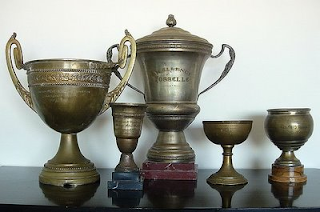I have to compare The Barbarian Nurseries to The Help. Both novels are about the inequities between the moneyed and their domestic servants and shine a light on the plight of those the majority opts to keep voiceless in society. And. I'll be honest I am not a big fan of the novel The Help.
We all know the story that The Help tells correct? Ok then moving on to The Barbarian Nurseries by HéctorTobar. In this contemporary novel the Torres-Thompson family of Los Angeles and their illegal Mexican housekeeper, Araceli become the center of a media storm. Maureen and Scott Torres-Thompson and their three young children are currently on a downwardly mobile, downsizing spree after comfortable affluence. They have excised the gardener and the nanny and now only have their housekeeper as their badge of success.
When the troubles in their marriage accelerate into an argument that sends Maureen through a glass coffee table she flees with the baby. In the meantime Scott needs his break and he goes off to make himself feel better with another woman. Neither Maureen nor Scott has bothered to tell Araceli that she is now alone and in charge of the two young boys.
Having no instructions from their parents and indeed not knowing where Maureen and Scott are and when they will be back, Araceli decides to bring the boys to their Grandfather’s home in a different part of L.A. This is no simple over the river and through the woods trip to Grandfather’s house. Araceli has only a vague idea of how to get where she feels compelled to bring the boys for their own wellbeing. Their journey is a trip through a reality that verses the economically and socially cloistered lives of the status seeking Torres-Thompsons.
Tobar takes this framework and escalates the plot twists into an all too believable frenzy. The parents and the missing maid with children in tow are the stuff that media circuses feed off of. Tobar spares no character, no social concern, no popular theory his inventive, warts and all scrutiny in this mesmerizing novel.
So? The Help and The Barbarian Nurseries? They both have an important message to impart about the shamefully real circumstances of oppressed people in a free, wealthy nation and are written by talented storytellers. However The Help is ultimately a feel good victory of the morally worthy underdog story whereas The Barbarian Nurseries is a more honest and therefore more scathing novel that doesn’t allow the reader the safety of either distance or deniability. A+.































